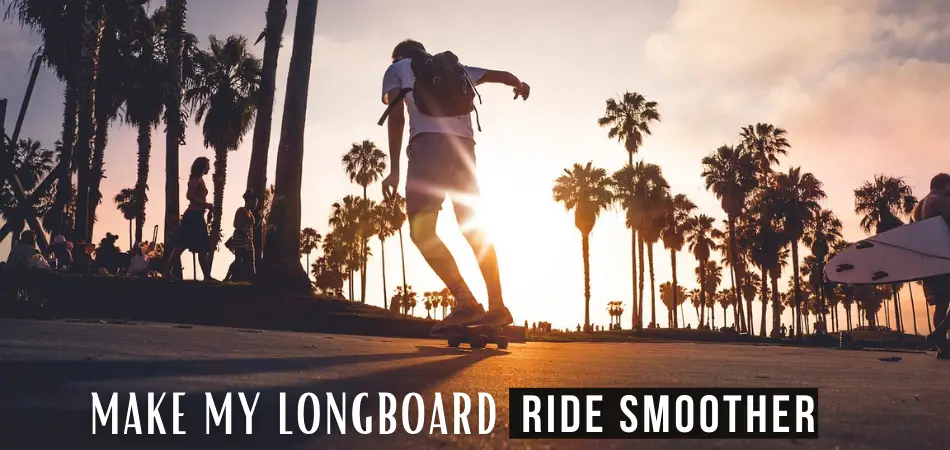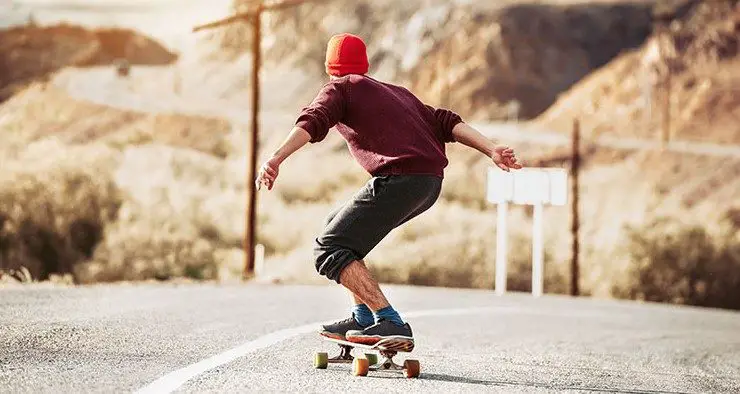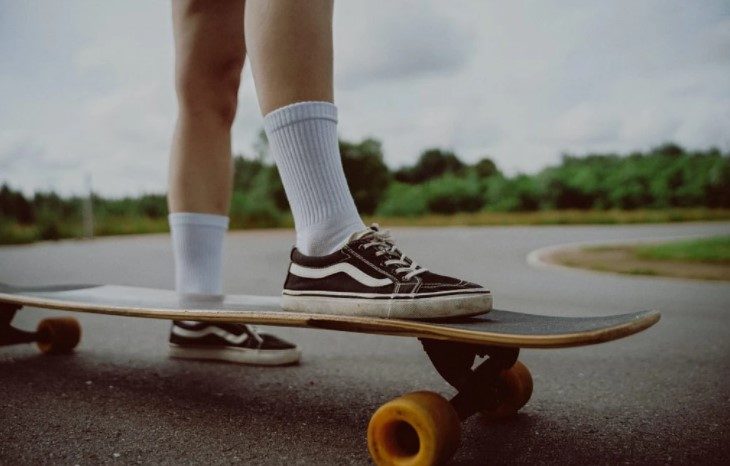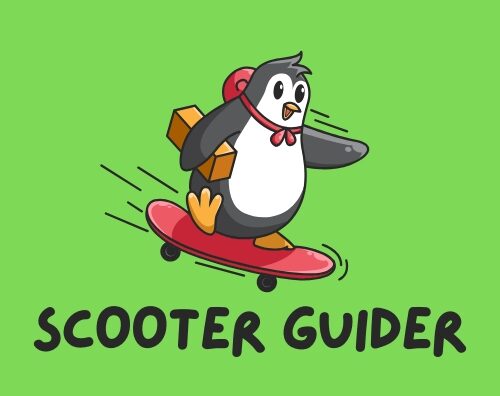Longboards are more advanced versions of traditional skateboards, and they have greater stability and durability than their predecessor. Because of these advantages, a large number of sports enthusiasts are interested in the game.
As longboards are commonly ridden on rough roads, getting a smooth transition can make a huge difference. So, if you’re wondering how do I make my longboard ride smoother, there are measures to make great improvements.
If you want to ride your longboard quickly and smoothly, I’ll provide you with some pointers on how to accomplish that. let’s get into it.
How Do I Make My Longboard Ride Smoother?
There are three reasons you are not longboarding smoothly. First is your equipment, second is your skill, and last, but not the least, your routes. There would be a more elaborate explanation to these points, but to be manageable, I’d break them down below:

1. Check the condition of your equipment
To be more specific, your longboard is in question. Longboards could be purchased in various configurations, including as individual components, pre-built units, and factory-assembled units at a very affordable cost. However, don’t go for crazy low prices, rather have a reasonable budget for it. You can find Budget Friendly Longboard Under 150 that offer highly balanced specs from sturdiness to smoothness built-in.
Lower-cost parts are more likely to provide less-than-optimal performance. Specifically, those bearings are usually the source of your longboard’s inability to perform smoothly, or at least not as smoothly as you would like it to. Its wheels, on the other hand, could be the problem.
You may not always need to replace those bearings, and only need to perform some minor cleaning and lubrication instead. A dirty set of bearings may prevent you from getting that smooth ride. Simple lubrication and tidying might suffice, though. To clean your bearings, simply follow the steps outlined below.
Step 1: Remove the bearings from the machine
Remove the nut that connects the first wheel to the axle first, then pull the wheel out of the axle. Apply just enough force that it does not completely separate from the axle. Loosen the bearing by wiggling the wheel. Then you could remove the whole wheel from the assembly.
After that, roll it on the other side and insert one end of the axle rod into the next bearing. Repeat the wriggling process described above, and you should be able to see the bearings.
Step 2: Remove and clean the bearings
Clean the bearings with a clean piece of cloth to remove any debris and dirt that has accumulated on their surface. You will notice more debris coming out of the bearings if you swirl the solvent with the bearing. After you have completed this step, remove the bearings and allow them to dry on their own.
Step 3: Lubricate them
You can apply the lubricant directly to the bearings by spraying or pouring it on. Use only a few drops of whichever lubricant you are using. If you are finished with the bearings, it may be a good idea to check if the wheels need to be replaced.
The wheels on your longboard are another important factor in determining the speed of your longboard. Here are two feasible solutions that can assist you in making your longboard go faster.
Experiment with wheels with a larger diameter
Smaller wheels grab up momentum more quickly than larger wheels, but the latter is generally faster and smoother, on the whole, allowing you to accelerate your longboard faster.
Replace of the current rollers with premium ones
If you only spend cheap on your longboard, chances are its wheels are made of urethane, which is not recommended for smoothness. Your wheels’ resilience will decrease over time as a result of this compound, apart from a poor rebound and weak cores. High-quality wheels, on the other hand, have good performance and smoother rolling.
2. Improve your longboard riding abilities
A new method has emerged, one that does not necessitate the modification of your longboard while maintaining the same exhilarating experience. You must work on improving your riding technique, and we have compiled a list of suggestions to help you become a more proficient longboard rider below.

Have self-assurance
Longboarders are vulnerable to mental threats such as the fear of losing control at high speed. As a result, having confidence in your ability to brake is critical, as it will aid you in making progress along the way.
Protect yourself by donning appropriate clothing and equipment
Protective equipment is required for the majority of activities because it helps to reduce the likelihood of injuries occurring during the activity. Helmets, gloves, elbow pads, and knee pads are all considered standard equipment.
Controlling the wobbles in the speedometer
It is possible to have speed wobbles that prevent you from enjoying the experience of smooth riding. All you have to do now is gather your wits and increase the amount of pressure on the front pickup truck.
3. Alter your travel routes
A final point to mention is that the quality of the road surface can be an obstacle to your longboarding experience. Rugged, pebble-filled roads can easily knock you off your game plan and out of the game. For this reason, you should choose smooth and uncrowded roads, which will make maneuvering easier and your ride faster, while also providing you with a sense of excitement and adventure.
How to Improve Your Longboard Riding Skills
Are you having difficulty with longboarding? Have you been practicing for a long time but haven’t seen any improvement? Ride on—I mean, read on to get these tips to advance your Longboarding skills
It’s likely that you want to improve your riding skills and become a better longboarder, regardless of what skill tier you belong. These suggestions may provide you with an idea and a plan for improving your riding abilities.

Begin with the fundamentals
Having a solid foundation as a beginner rider is essential for progressing, improving your skills, and becoming more proficient at longboarding.
Begin with simple movements such as skating, pushing, turning, and maintaining balance on the board to get comfortable.
Once you are comfortable with the way the board responds beneath your feet on simple movements, you can progress to more advanced maneuvers and tricks.
Learn how different longboarding stances
Being able to maintain a stable riding position in a variety of stances will help you become a better longboarder. In other words, a more versatile and creative rider who can pull off more complicated and gnarly stunts is what I’m talking about.

After you get used to your regular riding stance, experiment with changing it (switches). Try riding Goofy if you’re Regular (left foot in front), and vice versa if you’re Regular (right foot in front).
Additionally, you can experiment with different stance widths. As an example, taking a wider stance will help you to be more stable. You can also experiment with the angle of your feet to find the position that is most comfortable for you.
Ride as much as you possibly can
It’s as simple as that. While this may appear to be a joke or to be overly obvious, there is a valid point to be made here. “Practice makes perfect,” as the saying goes.
In order to become better at it, you must practice regularly over an extended period of time. Make as many rides as you can, even for commuting.
Instead of taking public transportation, biking, or driving to your destination, you can use a longboard to get there. That way, you’ll become more comfortable in a variety of situations, learn to adapt to different surfaces and improve your reaction time and balance.
Ride with a group of friends or peers
A well-known fact is that doing something in a group, such as learning, has been shown to be more effective than doing it alone. In fact, there are studies that are devoted to this particular subject. This holds true for longboarding as well.
Riding with your friends and peers is not only entertaining, but it also creates the impression of a live competition. Naturally, you’ll be making progress as a result of your competition. People have a tendency to imitate the actions of others.
On top of that, the opinions and advice of others can be extremely beneficial to you. That can assist you in making improvements and correcting your mistakes. You may even receive praise or a compliment from time to time, which can help to boost your self-esteem.
Last but not least, riding with friends brings us to the next tip, which they can also assist with.
Make a video of your riding
If you have the opportunity to ride with friends or peers, you should consider asking them to film you while you ride.
Viewing your riding from the perspective of an observer will reveal what kind of mistakes or flaws you are prone to making. The video material will give you an idea of how good your riding abilities really are.
This has the advantage of allowing you to review your riding in real-time and make adjustments as needed. You should use caution when filming on your smartphone or any other camera that has a preview feature, especially during sessions.
Additionally, you can compare your riding to how it was in the past over time.
Ride to a variety of destinations
It is possible to become accustomed to a particular location or route after riding it for a period of time. This is known as habituation. What obstacles you face and how to overcome them are clear to you. You get accustomed to the route after a while. The question is, what happens if you arrive at a different location or travel a different route?
True enough, your riding might not be quite as spectacular any longer. So, try to switch up your locations every now and then. This will assist you in becoming more adaptable to different environments. Additionally, it will make you a more versatile rider.
Train at home (due to inclement weather/conditions)
It is not always possible to have good longboarding weather. Perhaps you live in a climate where it is cold and rainy most of the year, or where it is cold and rainy most of the year.
Maintaining physical activity and confidence during the offseason (for example, during the winter) can be accomplished by training at home on a bad weather day. There are a variety of things you can do with it though.
Regular physical activity will keep you in better shape, make you stronger, and reduce your risk of injury. When you fall down, you can take a significant amount of hits without backing off. If your body has been trained, you will recover more quickly, and the impact may not be as significant.
Frequently Asked Questions (FAQs)
Whether you are riding pro, or just starting out, a smooth ride on a longboard is adrenaline-rushing. See these commonly asked queries from other longboarders:
What is causing my skateboard to not travel in a straight line?
This is due to the fact that the truck bushings failed. Truck bushings are made of rubber or plastic, and their purpose is to absorb the impact of your turns. In order for the bushing to return to its original position, you have to push it back to its place if stuck.
What is the best way to keep my skateboard in good condition?
We do not recommend that you ride your skateboard through puddles, rain, or stand on your skateboard. Your bushings should be replaced every six months or so, at the very least. After a while, old bushings tend to flatten and become stiff, only to cause accidents.
Is it okay to use WD40 on my ball bearings?
The addition of lubricants to the exterior of your bearing casings will result in an increase in dirt being attracted to the bearing. WD40 is only a temporary solution for your skateboard.
Final Words
To summarize the matter, if you really want to improve your longboarding skills, you must remain focused and consistent. Ride as much as you possibly can, remain committed, and never give up.
So, if you’re asking, how do I make my longboard ride smoother? Here’s what we suggest: train whenever, and wherever possible, and seek out mentoring and advice when necessary while staying in a group where you get challenges.
And, perhaps most importantly, you must exercise patience. If you train consistently and hard over time, you will make significant progress.
